How Can HR Professionals Reduce Workplace Violence?
HR Question:
How can we reduce workplace violence?
HR Answer:
The numbers are staggering and undeniable. According to SHRM’s 2019 study, 48% of HR professionals reported some type of workplace violence incident in their organization. The U.S. Bureau of Labor Statistics also reported in the same year there were 888,220 events or exposures involving injury or illness. Of those, 20,870 were assaults in the workplace. Even worse, 454 of those assaults were fatalities.
Workplace violence has always been on the radar for HR professionals at some level. They are the first to encourage the involvement of an Employee Assistance Program (EAP); they regularly coach supervisors on having difficult conversations with employees; and often, they serve as sounding boards for employees when they are distraught or concerned. Through actions and behaviors, they work to create cultures of engagement, awareness, and even compassion and grace when faced with difficult employee relations issues regularly. Despite all of these efforts, it is sometimes not enough.
What else can be done beyond the EAP to help reduce and prevent workplace violence incidents?
Proper planning and assessment can help to identify risks.
With proper planning and worksite assessment, employers can identify ways to limit potential exposure, reducing the likelihood of incidents occurring. The Occupational Safety and Health Administration promotes a well-written and practiced workplace violence prevention program. But to truly be effective, programs like this need to contain engineering controls and administrative controls in addition to training.
The National Institute for Occupational Safety and Health (NIOSH) has developed specific guidelines to assist with violence prevention in a variety of work environments. Some helpful engineering controls include bright lighting, silent alarms for front desk/access points, video surveillance, access control, and door locks/badge systems throughout the building to limit the access points.
When creating your plan, remember to work with your local firefighters and/or police to get specific direction or even a complete evaluation of your worksite preparedness plan. There are also many paid professionals and consultants that will help write and/or review your plan specifically for your organization. In this situation, one size does not fit all, so be sure to get some expert advice in creating and training on a proper plan.
Encourage open communication – If you see something, say something.
Encourage open communication with employees, as raising and addressing concerns today can protect someone tomorrow. Create a culture where employees are free to voice their issues in a healthy manner and foster respect within the workplace. Remember to take all staff communications seriously. Even the smallest event can trigger individuals, so properly plan all messages and their delivery, especially if you are implementing any type of change.
Ask employees about safety concerns.
Be involved. Ask questions. Ask employees if they feel safe and what could be done to create a safer environment. Ask them how they are doing. Ask them what concerns or issues they have (and follow up). Focus on early detection of potential issues. HR professionals can play an important role by asking questions and being involved with the goal of early intervention and prevention of workplace incidents.
Leverage technology to identify and address incidents quickly.
New technology is quickly becoming helpful in ways we could have never imagined. A few examples include the following tools out in the market today.
Response technologies can be used to quickly activate the need for first responders. There are tools with location and geofencing that allow responders to pinpoint the actual spot where an event is reported. Active shooter research tells us that in many cases there is a very short window to intervene. Having location accuracy helps improve the chances of an effective and timely response.
Digital technology tools continue to evolve in this space. There are apps, for example, that organizations can provide to employees that allow for confidential reporting of workplace concerns. Think “Ethics Line” gone mobile. These tools allow employees to report concerns – confidentially – and in real-time. The employee report can even include uploaded photos, video, or audio of the behaviors or events they are concerned about or have witnessed, assisting with a future investigation if necessary.
Acoustic gunshot detection is another type of technology that has been implemented in some worksites. These types of systems automatically detect the sound and then tie it to the company’s security systems. It can then sound an alarm, notify the security team, and even dispatch help… long before someone onsite can even discern if the noise was a gunshot or make a call for help.
More sophisticated security programs and camera systems can also assist with potentially violent situations. Old camera systems are reactive, sometimes only activating when a commotion activates the camera. New systems today are proactive, using facial recognition. The systems can send signals if an unauthorized person enters a building or even if someone is carrying a weapon onto the worksite.
As the number of incidents continues to grow, HR professionals and business leaders need to prepare their worksites in ways they have never done before. It is important to remember that the culture we create, the programs we provide, and the tools and technology we implement can help to calm a potentially violent situation you did not expect. Human Resources can take an active role “beyond an EAP referral” to prepare the workplace, staff, and employees to handle these unpredictable situations and even potentially save lives.
Special thanks to Patti Dunham, MBA, MA, SPHR, SHRM-SCP for contributing to this edition of our HR Question of the Week!
In 2019, Strategic HR and MYCA Learning partnered together to support organizations in their search for essential training in accessible ways, resulting in the creation of our Active Shooter Preparation e-Learning Course. Geared toward preparing and protecting our communities should they face the unthinkable, this fifteen-minute course seeks to educate participants on how to be aware, how to assess their surroundings, and how to make a plan.


